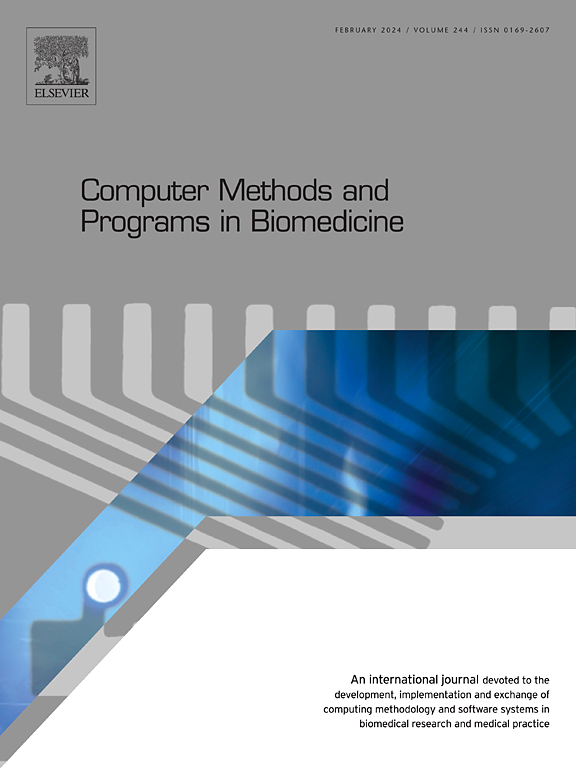Towards the use of multiple ROIs for radiomics-based survival modelling: Finding a strategy of aggregating lesions
IF 4.9
2区 医学
Q1 COMPUTER SCIENCE, INTERDISCIPLINARY APPLICATIONS
引用次数: 0
Abstract
Background:
Radiomic features, derived from a region of interest (ROI) in medical images, are valuable as prognostic factors. Selecting an appropriate ROI is critical, and many recent studies have focused on leveraging multiple ROIs by segmenting analogous regions across patients — such as the primary tumour and peritumoral area or subregions of the tumour. These can be straightforwardly incorporated into models as additional features. However, a more complex scenario arises, for example, in a regionally disseminated disease, when multiple distinct lesions are present.
Aim:
This study aims to evaluate the feasibility of integrating radiomic data from multiple lesions into survival models. We explore strategies for incorporating these ROIs and hypothesize that including all available lesions can improve model performance.
Methods:
While each lesion produces a feature vector, the desired result is a unified prediction. We propose methods to aggregate either the feature vectors to form a representative one or the modelling results to compute a consolidated risk score. As a proof of concept, we apply these strategies to predict distant metastasis risk in a cohort of 115 non-small cell lung cancer patients, 60% of whom exhibit regionally advanced disease. Two feature sets (radiomics extracted from PET and PET interpolated to CT resolution) are tested across various survival models using a Monte Carlo Cross-Validation framework.
Results:
Across both feature sets, incorporating all available lesions — rather than limiting analysis to the primary tumour — consistently improved the c-index, irrespective of the survival model used. The highest c-Index obtained by a primary tumour-only model was 0.611 for the PET dataset and 0.614 for the PET_CT dataset, while by using all lesions we were able to achieve c-Indices of 0.632 and 0.634.
Conclusion:
Lesions beyond the primary tumour carry information that should be utilized in radiomics-based models to enhance predictive ability.

在基于放射组学的生存模型中使用多重roi:寻找聚集病变的策略
背景:放射学特征来源于医学图像中的感兴趣区域(ROI),是有价值的预后因素。选择合适的ROI至关重要,最近的许多研究都集中在通过分割患者的类似区域来利用多个ROI -例如原发肿瘤和肿瘤周围区域或肿瘤的亚区域。这些可以作为附加功能直接合并到模型中。然而,更复杂的情况出现,例如,在区域弥散性疾病中,当存在多个不同的病变时。目的:本研究旨在评估将多病变放射学数据整合到生存模型中的可行性。我们探索了纳入这些roi的策略,并假设包括所有可用的病变可以提高模型的性能。方法:每个病灶产生一个特征向量,期望的结果是一个统一的预测。我们提出了一些方法来聚合特征向量以形成一个代表性的特征向量或建模结果来计算综合风险评分。作为概念的证明,我们应用这些策略来预测115名非小细胞肺癌患者的远处转移风险,其中60%的患者表现出局部晚期疾病。两个特征集(从PET提取的放射组学和插值到CT分辨率的PET)使用蒙特卡罗交叉验证框架在各种生存模型中进行测试。结果:在这两个特征集中,结合所有可用的病变,而不是局限于原发肿瘤的分析,无论使用何种生存模型,都能持续提高c指数。仅原发肿瘤模型获得的最高c指数为PET数据集的0.611和PET_CT数据集的0.614,而通过使用所有病变,我们能够获得0.632和0.634的c指数。结论:原发肿瘤以外的病变携带的信息应用于基于放射组学的模型,以提高预测能力。
本文章由计算机程序翻译,如有差异,请以英文原文为准。
求助全文
约1分钟内获得全文
求助全文
来源期刊

Computer methods and programs in biomedicine
工程技术-工程:生物医学
CiteScore
12.30
自引率
6.60%
发文量
601
审稿时长
135 days
期刊介绍:
To encourage the development of formal computing methods, and their application in biomedical research and medical practice, by illustration of fundamental principles in biomedical informatics research; to stimulate basic research into application software design; to report the state of research of biomedical information processing projects; to report new computer methodologies applied in biomedical areas; the eventual distribution of demonstrable software to avoid duplication of effort; to provide a forum for discussion and improvement of existing software; to optimize contact between national organizations and regional user groups by promoting an international exchange of information on formal methods, standards and software in biomedicine.
Computer Methods and Programs in Biomedicine covers computing methodology and software systems derived from computing science for implementation in all aspects of biomedical research and medical practice. It is designed to serve: biochemists; biologists; geneticists; immunologists; neuroscientists; pharmacologists; toxicologists; clinicians; epidemiologists; psychiatrists; psychologists; cardiologists; chemists; (radio)physicists; computer scientists; programmers and systems analysts; biomedical, clinical, electrical and other engineers; teachers of medical informatics and users of educational software.
 求助内容:
求助内容: 应助结果提醒方式:
应助结果提醒方式:


